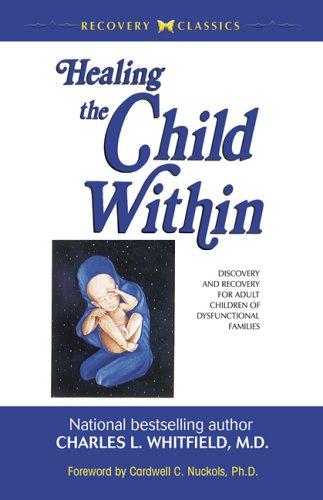Healing the Child Within:
Discovery and Recovery for Adult Children of Dysfunctional Families

Chapter 6
The Dynamics of Shame and Low Self-Esteem
Shame or low self-esteem plays a major role in stifling our Child Within. Shame is both a feeling or emotion, and an experience that happens to the total self, which is our True Self or Child Within (Fischer, 1985; Kaufman, 1980; Kurtz, 1981).
It is also a dynamic or process that happens to us, especially when we are unaware, and sometimes even when we become aware of the truth about many of the aspects of our shame.
Growing up in a troubled or dysfunctional family is nearly always associated with shame and low self-esteem in all members of that family. Only the manifestations of shame vary among family members. We each adapt to shame in our own way. The major similarity is that nearly everyone will be co-dependent and operates primarily from their false self. We can thus describe the troubled or dysfunctional family as being shame-based.
Guilt
People often confuse shame with guilt. While we feel both, there is a difference between them.
Guilt is the uncomfortable or painful feeling that results from doing something that violates or breaks a personal standard or value, or from hurting another person, or even from breaking an agreement or a law. Guilt thus concerns our behavior, feeling bad about what we have done, or about what we didn't do that we were supposed to have done.
Like most feelings, guilt can be a useful emotion to help guide us in our relationships with ourselves and with others. Guilt tells us that our conscience is functioning. People who never experience guilt or remorse after transgressions have difficulty in their lives, and are classically said to have an anti-social personality disorder.
Guilt that is useful and constructive we call ''healthy" guilt. We use this kind of guilt to live in society, to resolve our conflicts or difficulties, to correct our mistakes, or to improve our relationships. When guilt is detrimental to our serenity, our peace of mind, and our functioning including our mental, emotional and spiritual growth we call it "unhealthy" guilt. People from troubled or dysfunctional homes or environments often have a mixture of healthy and unhealthy guilt. Unhealthy guilt is usually not handled or worked through and lingers on, at times becoming psychologically and emotionally disabling. Our "responsibility" to family overcomes our responsibility to our True Self. There may also be "survivor" guilt, wherein the person feels guilty and unworthy for leaving and abandoning others in a troubled environment or surviving in life after others may have failed (see also Chapter 7).
Guilt can be relieved substantially by recognizing its presence and by then working it through. This means that we experience it, and discuss it with trusted and appropriate others. In its simplest resolution, we may apologize to the person whom we may have harmed or deceived, and ask their forgiveness. In its more complex forms, we may have to talk about the guilt in more depth, perhaps in group or in individual therapy.
Guilt is often easier to recognize and resolve than is shame.
Shame
Shame is the uncomfortable or painful feeling that we experience when we realize that a part of us is defective, bad, incomplete, rotten, phoney, inadequate or a failure. In contrast to guilt, where we feel bad from doing something wrong, we feel shame from being something wrong or bad. Thus guilt seems to be correctable or forgiveable, whereas there seems to be no way out of shame.
Our Child Within or True Self feels the shame and can express it, in a healthy way, to safe and supportive people. Our co-dependent or false self, on the other hand, pretends not to have the shame, and would never tell anyone about it.
We all have shame. Shame is universal to being human. If we do not work through it and then let go of it, shame tends to accumulate and burden us more and more, until we even become its victim.
In addition to feeling defective or inadequate, shame makes us believe that others can see through us, through our facade, into our defectiveness. Shame feels hopeless: that no matter what we do, we cannot correct it (Fischer, 1985; Kaufman, 1980). We feel isolated and lonely with our shame, as though we are the only one who has the feeling.
What is more, we may say, "I'm afraid to tell you about my shame because if I do, you'll think I'm bad, and I can't stand hearing how bad I am. And so not only do I keep it to myself, but I often block it out or pretend that it is not there.
"I may even disguise my shame as if it were some other feeling or action and then project that onto other people." Some of these feelings and actions that may mask our shame include:
Anger Contempt Neglect or Withdrawal
